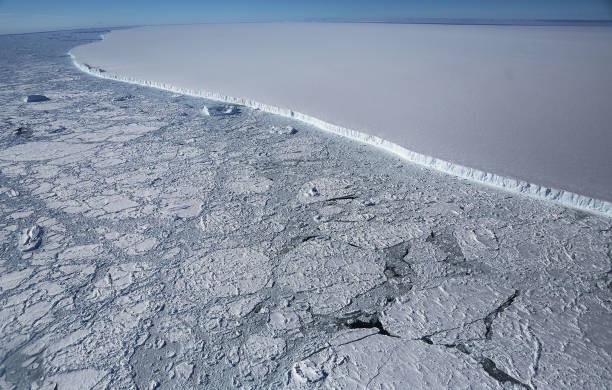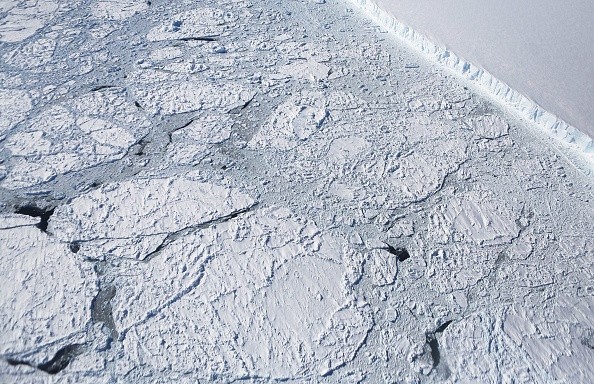As the Earth keeps on warming, there is a possibility that over a third of the Antarctic ice shelf will collapse. In a recent study, experts at the University of Reading have discovered that as a change in climate keeps up, if Earth's global temperature increases to 4 degrees Celsius (7.2 degrees Fahrenheit) above the pre-industrial levels, around 500,000 square kilometers (193,000 square miles) of the Antarctic ice shelves could disintegrate into the sea.

Increase in Global Sea Levels
Ice shelves are constant floating slabs of ice connected to coastline, and the collapse of these shelves could remarkably increase global sea levels, the experts suggest. Ella Gilbert, a lead study author, and also a research scientist in the University of Reading's Department of Meteorology, said in a statement: "Ice shelves are crucial buffers stopping glaciers on land from flowing easily into the ocean and adding to the rise in sea level. When they collapse, it's like an enormous cork being detached from a bottle, letting an unimaginable quantity of water from glaciers flow into the sea."
Ice on the top of the ice shelf liquefies and that water travels into the snow beneath where it freezes again each summer in Antarctica.
Also Read : Scientists Find Hidden Marine Life 'Trapped Under Ice Shelves' in Antarctica for 50 Years!
Stability of the Ice Shelf
But in years with melting ice that is more than snowfall, that water ends up merging on the surface of the ice shelf and drop into cracks in the ice, growing and melting those cracks up until the ice shelf disintegrates into the ocean.
This same thing occurred with the Larsen B ice shelf in 2002 and in this study experts recognized the ice shelf Larsen C as at specific risk for collapse in warmer temperatures. In this study, experts made use of high-resolution regional climate modeling technology to forecast how liquefying ice and water flow will influence the stability of the ice shelf over time and at distinct global temperatures.

Decline in the Antarctic Ice Shelf
They designed the vulnerability of ice shelf at global temperatures 1.5 degrees C (2.7 degrees F), 2 degrees C (3.6 degrees F), and 4 degrees C (7.2 degrees F) exceeding pre-industrial levels, three scenarios that are all achievable within this century, according to the statement.
"We know that when liquefied ice percolates on at the top of ice shelves, it can cause them to fracture and collapse amazingly.
Past research has given us the overall view in terms of foreseeing the decline in the Antarctic ice shelf, but our recent study uses the newest modeling methods to fill in the finer detail and make a more precise projection available," Gilbert said. They discovered that, at 4 degrees C (7.2 degrees F ) exceeding pre-industrial global temperatures, 34% of all Antarctic ice shelves (both 67% of the ice shelf region on the Antarctic Peninsula).
Related Article : Antarctic Ice Shelf Thinning from Above... and Below
For more news, updates about the Antarctic ice shelf and similar topics, don't forget to follow Nature World News!
© 2025 NatureWorldNews.com All rights reserved. Do not reproduce without permission.





